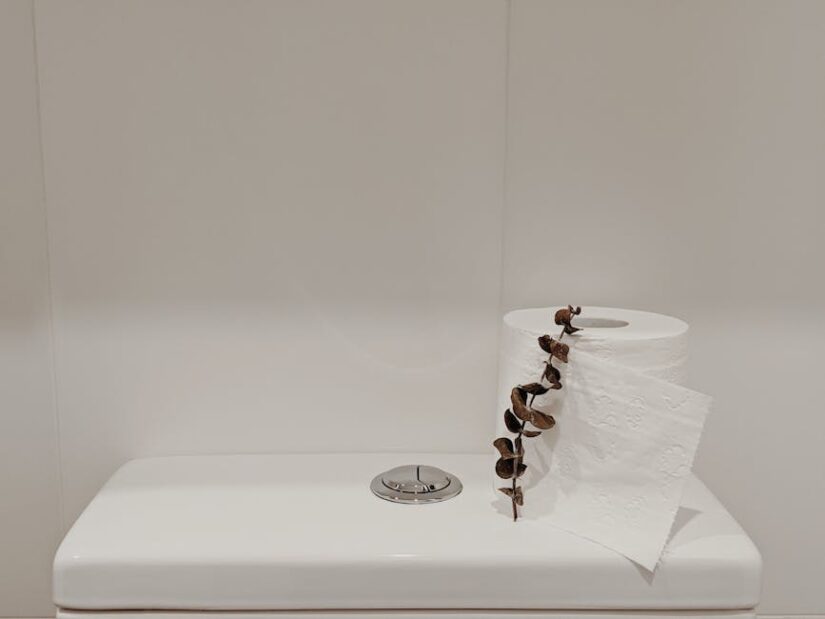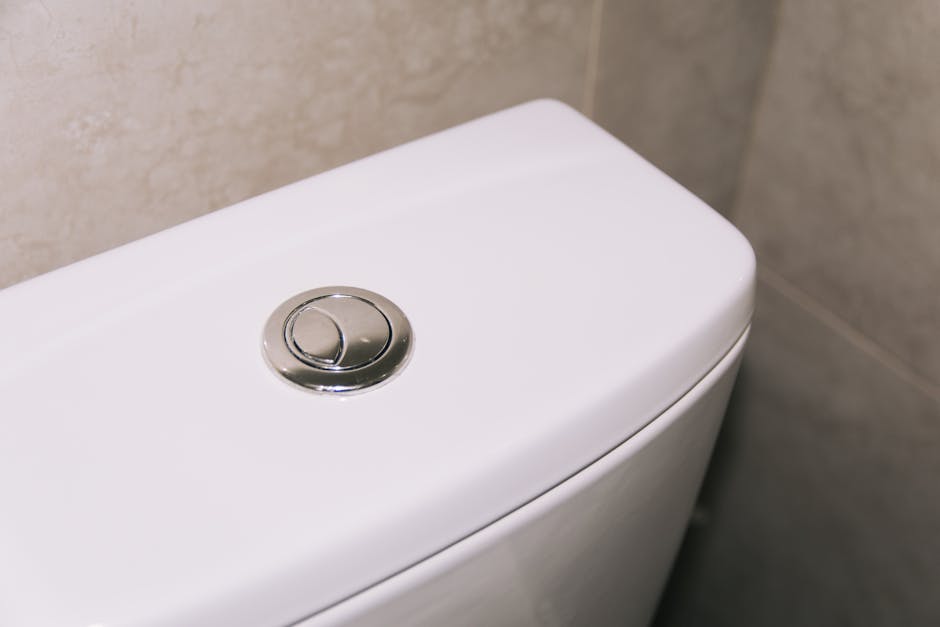Mastering Toilet Tank Repairs: A Comprehensive Guide
By Brian on February 14, 2025

Toilet tank repair is an essential skill for any homeowner facing common toilet problems. Whether you’re struggling with a constantly running toilet, a slow refill, or mysterious leaks, understanding the basics of toilet tank repair can save both time and money. Here’s a quick overview of the most common issues:
- Running Toilet: Often caused by a faulty flapper or fill valve.
- Leaking Tank: Can stem from worn-out washers or loose connections.
- Cracked Tank: Might require a full replacement if severe.
Your toilet is more than just a utility; it’s an everyday necessity. When issues arise, the inconvenience can be immense, disrupting daily routines and even increasing your water bills. While some repairs may seem daunting, many common toilet problems can be fixed with a little DIY spirit and the right know-how.
Northern California residents, particularly in areas like Rancho Cordova and Sacramento, understand how crucial reliable plumbing is for maintaining comfort in their homes. Whether you’re a homeowner eager to hone your DIY repair skills or someone seeking to prevent small issues from becoming costly repairs, this comprehensive guide will help you master the ins and outs of toilet tank repairs.

Toilet tank repair word roundup:
– running toilet repair
– toilet repair tank not filling
Understanding Toilet Tank Components
To tackle toilet tank repair effectively, it’s crucial to understand the key components inside the tank. Each part plays a vital role in ensuring your toilet functions smoothly. Here’s a breakdown of the essential components:
Flush Valve
The flush valve is the gateway for water to move from the tank to the bowl. When you press the flush handle, the flush valve opens, allowing water to rush into the bowl and carry waste through the plumbing system. A malfunctioning flush valve can lead to problems like incomplete flushes or a constantly running toilet.
Fill Valve
The fill valve controls the water level in the tank. After a flush, it allows water to refill the tank to the correct level. If the fill valve is faulty, you might experience issues like a slow-filling tank or water continuously running into the overflow tube. Cleaning or replacing the fill valve can resolve these issues.
Flapper
The flapper is a rubber seal that sits over the flush valve opening. It lifts when you flush, allowing water to exit the tank. A worn or damaged flapper is a common cause of a running toilet, as it fails to seal the flush valve properly, letting water leak into the bowl constantly. Replacing the flapper is a simple fix that can save a lot of water.
Float Mechanism
The float mechanism controls the fill valve. As the tank refills, the float rises and shuts off the fill valve once the water reaches the desired level. If the float is set too high or too low, it can cause the toilet to run or not fill properly. Adjusting the float can solve these issues, ensuring the water level is just right.

Understanding these components can empower you to diagnose and address common toilet issues, saving you from unnecessary costs and stress. Whether you’re dealing with a running toilet or a slow fill, knowing how these parts work will guide you in making effective repairs.
Common Toilet Tank Problems and Solutions
Even the most reliable toilets can encounter issues. Let’s explore some common problems and their solutions.
Fixing a Leaking Toilet
A leaking toilet can waste a lot of water and inflate your bills. Leaks often occur where the supply line enters the toilet or where the tank connects to the bowl.
-
Supply Line Leaks: If you notice water pooling around the base, check the supply line. Tighten the connection if it’s loose. If the line is damaged or over five years old, replace it.
-
Tank-to-Bowl Leaks: Water leaking between the tank and bowl might be due to loose or corroded bolts. Tighten the bolts carefully to avoid cracking. If tightening doesn’t stop the leak, replace the bolts and the rubber gasket. Inspect for cracks in the tank; in severe cases, a replacement might be necessary.
-
Floor Leaks: Water seeping at the toilet’s base could indicate a worn wax ring. This seal prevents leaks where the toilet meets the waste pipe. If tightening the mounting bolts doesn’t help, replace the wax ring.
Addressing a Running Toilet
A running toilet can be annoying and costly. It’s often caused by a faulty flapper or a misadjusted fill valve.
-
Flapper Replacement: If the toilet runs continuously, the flapper might not be sealing the flush valve properly. Inspect it for wear or damage. Replacing a flapper is straightforward and can stop the constant flow of water into the bowl.
-
Fill Valve Adjustment: If water keeps running into the overflow tube, adjust the fill valve. Ensure the float mechanism is set correctly so the valve shuts off at the right water level. This simple tweak can prevent overflow and stop the constant running.
Repairing a Cracked Toilet Tank
Cracks in the toilet tank can lead to significant water loss and damage.
-
Temporary Fixes: For small, non-structural cracks, a waterproof epoxy can serve as a temporary seal. However, this is only a stopgap measure.
-
Replacement Options: For larger or structural cracks, consider replacing the tank. In some cases, it’s more practical to replace the entire toilet, especially if it’s old or has other issues.
Understanding these common issues and their solutions can help you tackle toilet problems effectively. Whether it’s a simple gasket replacement or a more involved tank swap, knowing what to do can save you time and money.
DIY Toilet Tank Repair Tips
Repairing your toilet tank can seem daunting, but with the right tools and steps, you can do it yourself. Here’s a straightforward guide to help you through the process.
Essential Tools for Toilet Tank Repair
Before you start any repair, gather the necessary tools. Having the right tools on hand makes the job easier and safer.
- Pliers: Useful for gripping and twisting components.
- Adjustable Wrench: Essential for loosening and tightening nuts and bolts.
- Repair Kits: These often include replacement parts like flappers, fill valves, and gaskets.
- Screwdriver: Needed for removing screws, especially on tank lids.
Step-by-Step Repair Guide
Follow these steps to tackle common toilet tank issues safely and effectively.
- Safety Precautions:
- Always wear gloves to protect your hands from sharp edges and cleaning chemicals.
-
Use protective eyewear to avoid splashes when dealing with water and cleaning agents.
-
Turn Off Water Supply:
- Locate the shut-off valve, usually found behind the toilet near the floor. Turn it clockwise to stop the water flow.
-
Flush the toilet to empty the tank and bowl. Use a sponge or towel to soak up any remaining water in the tank.
-
Remove Tank Lid:
-
Carefully lift the tank lid and set it aside in a safe place to avoid breaking it. The lid is fragile and can crack easily.
-
Inspect and Replace Parts:
- Flapper: Check the flapper for wear or damage. If it’s not sealing properly, replace it with a new one from your repair kit.
- Fill Valve: If the toilet is not filling correctly, adjust the fill valve or replace it if necessary. Follow the manufacturer’s instructions for installation.
-
Gaskets and Bolts: Inspect the gaskets and bolts connecting the tank to the bowl. Replace any corroded or damaged parts to prevent leaks.
-
Reassemble and Test:
- Once repairs are complete, reattach the tank lid. Turn the water supply back on by turning the valve counterclockwise.
- Flush the toilet to ensure everything is working correctly and check for leaks.
By following these steps, you can handle many common toilet tank repairs yourself. This DIY approach not only saves money but also gives you the satisfaction of fixing things on your own. If problems persist or seem beyond your skill level, don’t hesitate to seek professional help.
Frequently Asked Questions about Toilet Tank Repair
Can a Toilet Tank Be Repaired?
Absolutely! Many toilet tank repair tasks can be done at home. First, assess the crack. Small cracks above the waterline can often be repaired with waterproof epoxy. However, if the crack is below the waterline or extensive, it may be time to consider a replacement. Crack assessment is crucial in deciding whether to repair or replace. Regular inspections can prevent small issues from becoming major problems.
Will Flex Seal Work on a Cracked Toilet Tank?
Flex Seal is a popular product for sealing leaks temporarily, but caution is key. While it can offer a quick fix for minor leaks, it might not hold up in the long term due to constant exposure to water and moisture. Moisture considerations are important because a temporary solution might not withstand the humid environment of a bathroom. For a more durable repair, consider using a waterproof epoxy specifically designed for plumbing.
How Much Does It Cost to Replace a Toilet Tank?
Repair costs for a toilet tank can be minimal if you’re doing it yourself, with expenses mainly for parts like gaskets or flappers, which can cost under $20. If you opt for professional help, labor costs can add to the bill. Replacement costs for an entire toilet can range from $100 to $300, depending on the model and brand. If the tank itself is severely damaged, replacing the toilet might be more cost-effective in the long run.

When considering repair versus replacement, weigh the cost of parts and labor against the price of a new toilet. Sometimes, investing in a new model can save you money on water bills and future repairs.
Conclusion
At Go Pro Plumbing, we understand that dealing with toilet issues can be stressful and inconvenient. That’s why our team is dedicated to providing exceptional customer service and efficient solutions to meet your plumbing needs. Whether it’s a minor leak or a major repair, our experienced plumbers are ready to help with same-day service, ensuring your toilet issues are resolved quickly and effectively.
Our commitment to outstanding customer service means we prioritize your satisfaction from the moment you contact us. We keep you informed throughout the repair process, offering transparent pricing and detailed explanations of the work being done. Our goal is to make the repair experience as seamless and stress-free as possible.
Choosing Go Pro Plumbing for your toilet tank repair needs not only guarantees a swift response but also peace of mind knowing that skilled professionals are handling your plumbing issues. Our team is equipped with the knowledge and tools to tackle any problem, big or small, ensuring that your toilet functions smoothly and efficiently.
If you’re facing a plumbing emergency or simply need routine maintenance, don’t hesitate to reach out to us. We are here to provide quality service that you can rely on. Experience the difference with Go Pro Plumbing and let us help keep your home’s plumbing in top shape.
